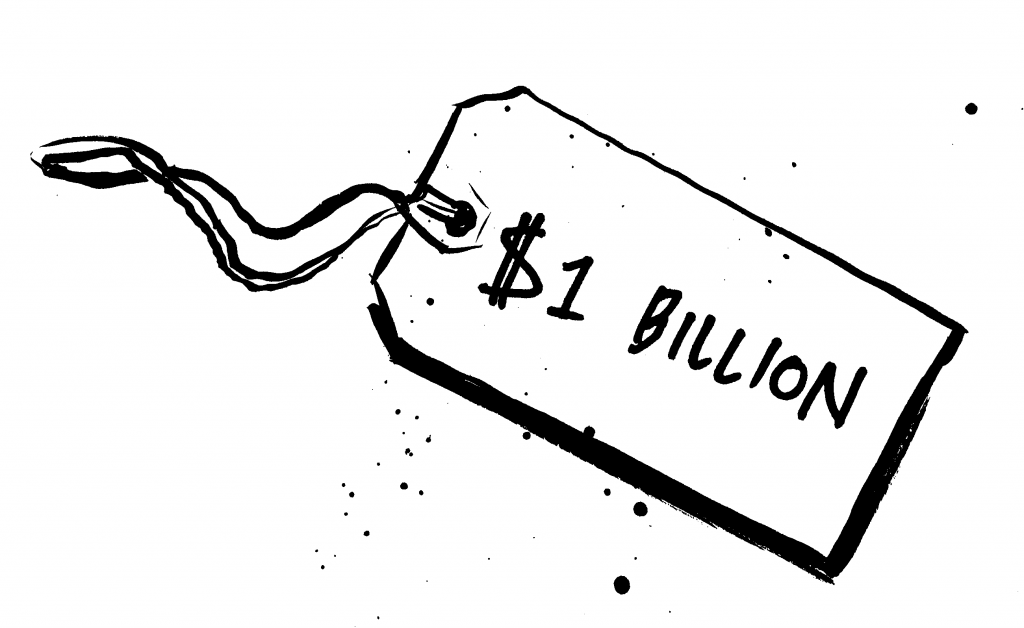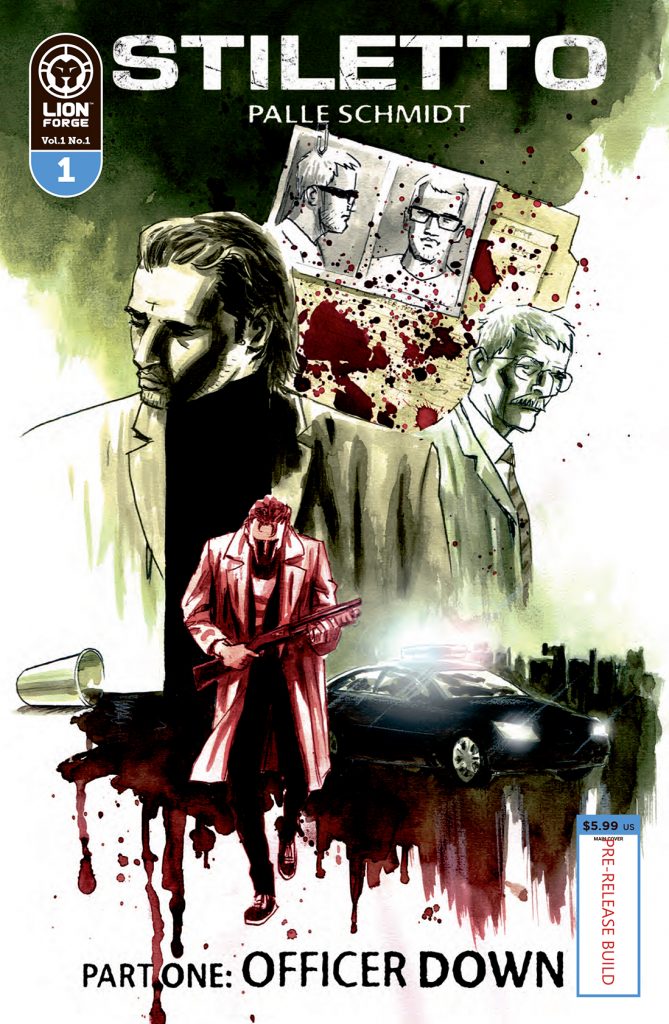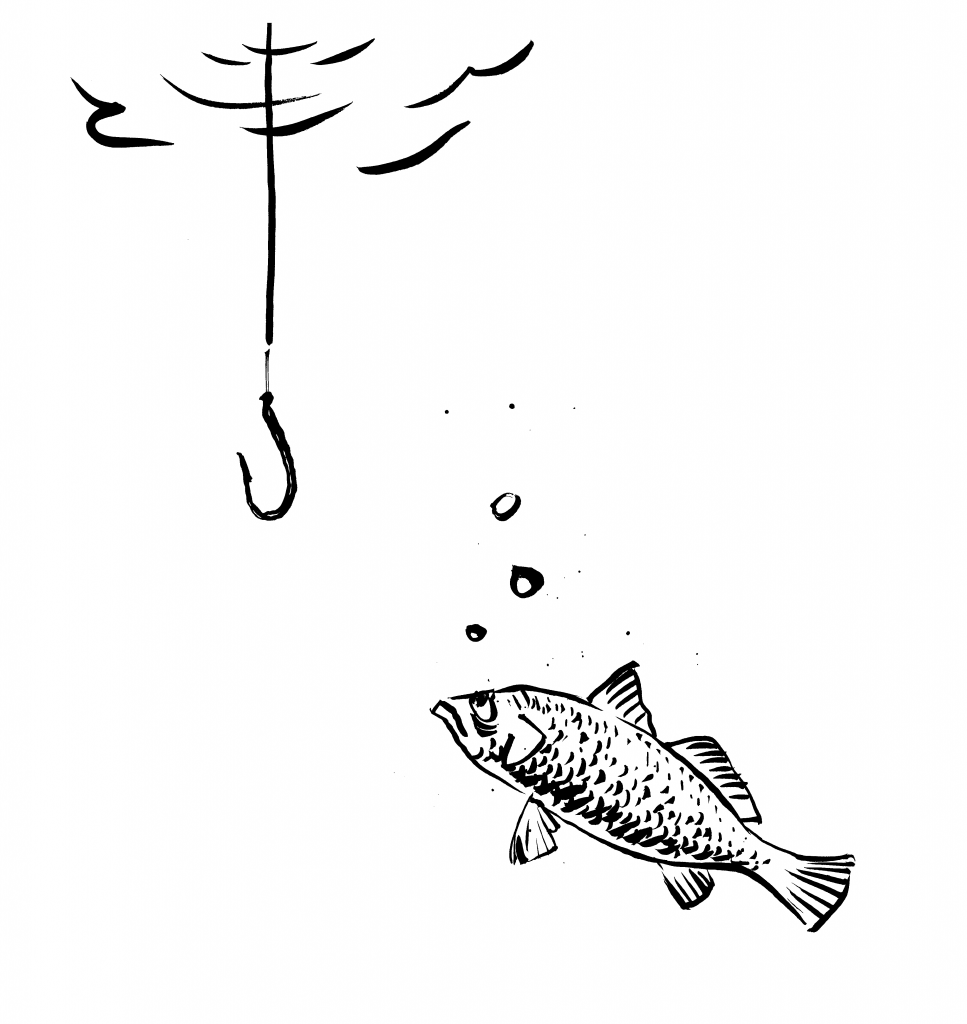Do you envy people who are more succesful than you? Then you’re like 99,9% of all creatives. But in this video I argue that you should wallow in your lack of success!
freelance life
The Art of Being an Artist

Your first year or two as a creative freelancer the focus should be to build your boat and get in the water. When you’re afloat and not taking in water, you can start to think about your destination. Where would you like to go?
To many people, art is a hobby. But it’s when you really start to take it seriously and treat it as your job that you really pivot. William Faulkner is quoted of saying: “I only write when inspiration strikes. Fortunately it strikes at nine every morning.”
Showing up at your desk is when things start to happen. The more you show up, the more likely it is that you’ll create something of value. You have to put in the hours, consistently. Painting a couple of times a month won’t make you a great painter. You have to build momentum and consistency and daily routines is key.
You can have a somewhat mediocre talent and still have a great artistic career. Just as you can be insanely talented and still struggle making it work. It’s not about talent as much as it is about courage, persistence and resilience.
Keeping your ego in check is another important aspect. You need some ego to find the belief the song you wrote is so great that everybody needs to hear it. But that ego can just as easily trip you up, if you start to think people don’t appreciate your genius enough. Or you strive for perfection in your work, feeling like it’s never as good on the paper as it was in your head (hint: It isn’t. This feeling never goes away, believe me!).
As an artist you expose yourself a lot and have to be willing to take criticism. You have to push yourself, and not hold back out of fear of what people might say. You have to be okay with shipping something you’re not a hundred percent satisfied with – chances are you never will be.
In 2011 I sat for a few weeks at Dean Haspiel’s Hang Dai Studios in Brooklyn. One of the guys at the studio asked for Dean’s advice on whether to take on a particular storyboarding job. He was worried he would fall short and botch the job somehow. Dean replied: “You need the money? Then you take the job. And you fail. HARD. And you learn from that”. That attitude was truly inspiring; expecting to fail and being okay with it. I certainly learned a lot from my brief spell at Hang Dai but also from taking on tasks I wasn’t entirely ready for.
One of the things I hear tossed around a lot, is the idea that you’re only as good as your last work. I disagree. You are the sum of all your creative outputs, good or bad. And you’re not always the best judge of quality – in fact you’re likely the worst. You just have to do the best you can at that moment and get it out there. You don’t end up back at square one because some project didn’t turned out the way you wanted it. In fact you learn more from a project like that than you do from a smooth success.
When the process is grueling, frustrating and hard, it’s likely because you’re evolving and growing as an artist. When you reach that plateau and it feels like you’re never going to get better, when you feel like quitting – that’s exactly when you need to push through.
If you want to learn to swim, you have to go in the deep end of the pool.
This post is an excerpt from my book SOLO – Survival Guide for Creative Freelancers – Order now on Amazon.

Scare Away the Clients

An advanced technique if you have too much incoming work (or just want to test your own limits) is jacking up the price. Just think of what the fair price would be and add thirty percent. If this makes the client run away screaming, great! On less item on your plate. If they accept your shameless price, great! More money for you, and more motivation to move things around in your calendar and put in the extra effort.
I usually give the high price first, being willing to go down, if I meet resistance. You can steal this tactic:
“My going rate for something like this would normally be around (insert high amount)…”
Take a moment. Sometimes the client will jump in going: “That sounds reasonably.” Boom! No need to negotiate further.
If, on the other hand, your hear them fall of the chair on the other end of the line, you can pick up your thought:
“…but since (it’s you/ it’s part of a larger project/ it sounds like a relatively simple task) I’m sure we can work out (a discount/ lower rate/some sort of bundle deal). How about (insert lower amount)?”
Pricing is all about supply and demand. I’m sure you can find plenty of people willing to undercut you. I mean, you can get a freelancer to do almost everything for $5 on Fiverr.com! You do not want to think of that segment as your competition.
If your unique expression is what the client is looking for, price matters a lot less. They’re paying for you, for your personality and the experience you bring to the table. If a client mentions that they can get the same thing cheaper elsewhere, I’d recommend you simply agree with them and perhaps even direct them to some of your lower paid colleagues.
What you offer as a professional is something other than bargain prices, it’s industry experience and a unique skill set. If you speak the same language as the client, culturally as well as professionally, you are great at what you do, flexible and accommodating, understanding of your clients needs – those are reassuring qualities worth paying premium for. Especially if you go the extra mile in terms of showing up in person for a briefing, getting on the phone instead of hiding behind e-mail.
Deliver on your promises every time and the clients will keep coming back – even if some graphic designer in Bangladesh can do the same thing at a tenth of your rate.
This post is an excerpt from my book SOLO – Survival Guide for Creative Freelancers – Order now on Amazon.

Case study: STILETTO

While I was working on The Devil’s Concubine, I had the idea for sort of a sequel, involving the two cops, Maynard and Alphonse. The story is heavily influenced by 70’s cop movies like Serpico and French Connection (the sequel being my favorite) and the inciting incident is more or less lifted from Bullitt. Where The Devil’s Concubine was an attempt to make a slick action movie in comic book form, I wanted STILETTO to have a more gritty and realistic feel to it.
The style is a great departure from earlier, more inspired from my own sketchbook than anything else. Trying to draw in the very slick style of artists like Eduardo Rizzo or my own mentor Peter Snejbjerg never came naturally to me and the process frustrated me to no end. I decided to try “inking” in pencil and painting the whole thing in watercolor – something I was used to doing in my illustration work.
I did a few tests and quickly realized that not only was this drawing process much more fun for me but I could also work way faster. Since making comics takes sooo long, any way to reduce the amount of hours spent on a page is more than welcome.
For the coloringI went for a expressionist approach rather than realism. Since it’s a cop story, the use of the color blue would be obvious. So I decided NOT to use the color blue at all! I only use blue for flashbacks and dream sequences. Keeping the whole book in dirty yellowish clay tones creates a much more startling effect when the characters enter a bar where everything is red or there is a flashback or cut-away panel in blue.
By this point I had stopped comparing myself to Danish peers pretty much altogether and focused on the US market. I felt I had an intriguing premise, a solid script and a style that immediately got people’s attention, when I showed the book to people at cons. So I was surprised when IDW didn’t pick up the book. I thought I was in and then it turned out to be a revolving door!
Although STILETTO was released in Denmark to rave reviews and an award nomination, It took a few years before the book made it to the US market. It only happened because Greg Tumbarello, this guy Chris knew and we kept bumping into at cons, got a new editorial position at Lion Forge. If I remember correctly, I shot Greg a note on Facebook saying congrats on the new job and we got to chatting. He asked about STILETTO, if anyone had picked it up and I was like: “Er, no. You want it?”
Working with Greg on STILETTO (and this book btw!) has been an absolute treat and a truly humbling experience. Greg has turned out to be not only a fun guy to hang out with but also a smart and well articulated editor with a quality lacking in a lot of people working in publishing; he answers his e-mail.
Lessons learned:
Breaking in is a never-ending process and the quality of the work seems not to matter as much as luck or timing. Sometimes a project that seems like a slam dunk will have to take the long road before finding a home. Be patient and persistent. You never know where the next opportunity, ally or friendship will turn up.
This post is an excerpt from my book SOLO – Survival Guide for Creative Freelancers – Pre-order now on Amazon.

The art of Saying No

There is such a thing as too much success. Meaning you go through periods where there is simply too many things on your plate and you have trouble keeping up. You have to take care of yourself and avoid burnout. Your energy is the most valuable resource of your company. Don’t squander it.
If you ever had a goldfish, you’ll know you have to take care not to overfeed them. The stupid things will keep eating until it kills them. Freelancers are basically like goldfish. We say yes to way too many incoming jobs because we’re afraid of starvation. You never know when you’ll be fed again, right?
While the overwhelm and stress it brings to take on more than you can handle probably won’t kill you, it could seriously damage your health both mentally and physically. If you crash and burn and need months to recover, it will also hurt your business. As a creative, you can’t just hire someone to do your job. Better to divert some of the incoming work before you’re unable to live up to your obligations.
When you say yes to one thing, you’re saying no to something else. While it’s tempting to take on every client, because we never know when they’ll stop calling, it’s a short term strategy that isn’t sustainable. You know how your computer slows down if you have too many open windows and programs running? Your brain is the same way. You don’t want it to crash on you taking you out of rotation for moths, unable to work on bring in any income. Better to say no up front.
Here’s a template you can use to get out of work:
Dear (name),
Thanks for reaching out! I’m sorry to say I can’t currently take on any more work as it would hurt obligations I already have.
I’d like to refer you to (name of colleague/other freelancer) who is both (reliable/insanely talented/great to work with) and (has a similar style to what you’re looking for/not too pricey/smells nice). You can find examples of (his/her) work at (website/Instagram page).
I’m sorry I’m unable to help out this time. Don’t hesitate to reach out again if the opportunity to work together should arise some time in the future.
Best,
(name)
Giving a respectful no is a tricky thing. Now I just saved you the trouble of figuring out how. You’re welcome. Please note that the above template is also applicable to any type of pro-bono work.
This post is an excerpt from my book SOLO – Survival Guide for Creative Freelancers – Get in now on Amazon.

Video: Unboxing SOLO
SOLO is written for people who want a sustainable career, mixing freelance work with creating and selling their own art. My promise is that diving into the tactics and strategies of this book will help you set realistic, actionable goals and give you the tools to carve out your own creative career path.
Watch the video to find out what I value the most about my freelance life and download a 20-page sample of SOLO here: http://bit.ly/solo-book